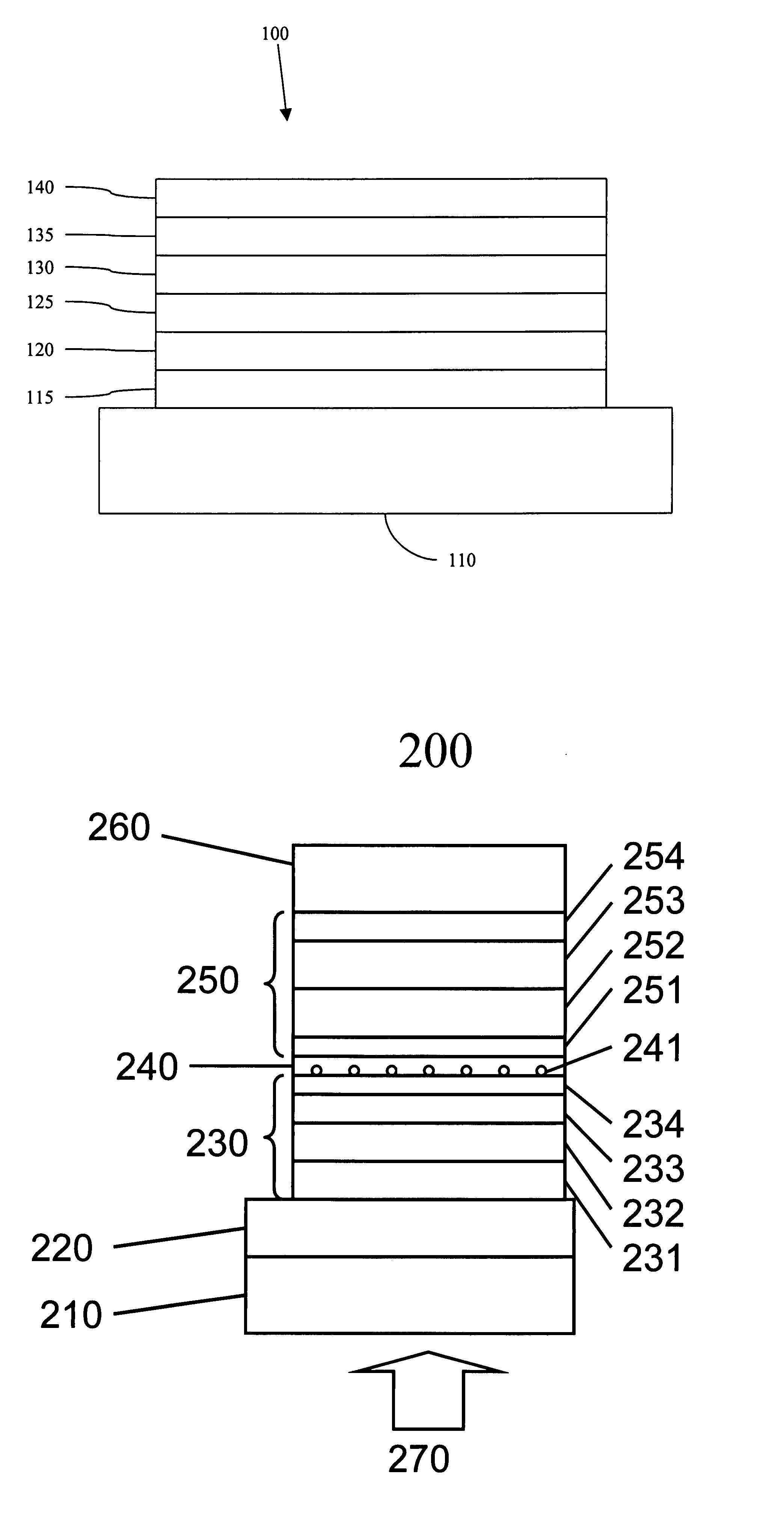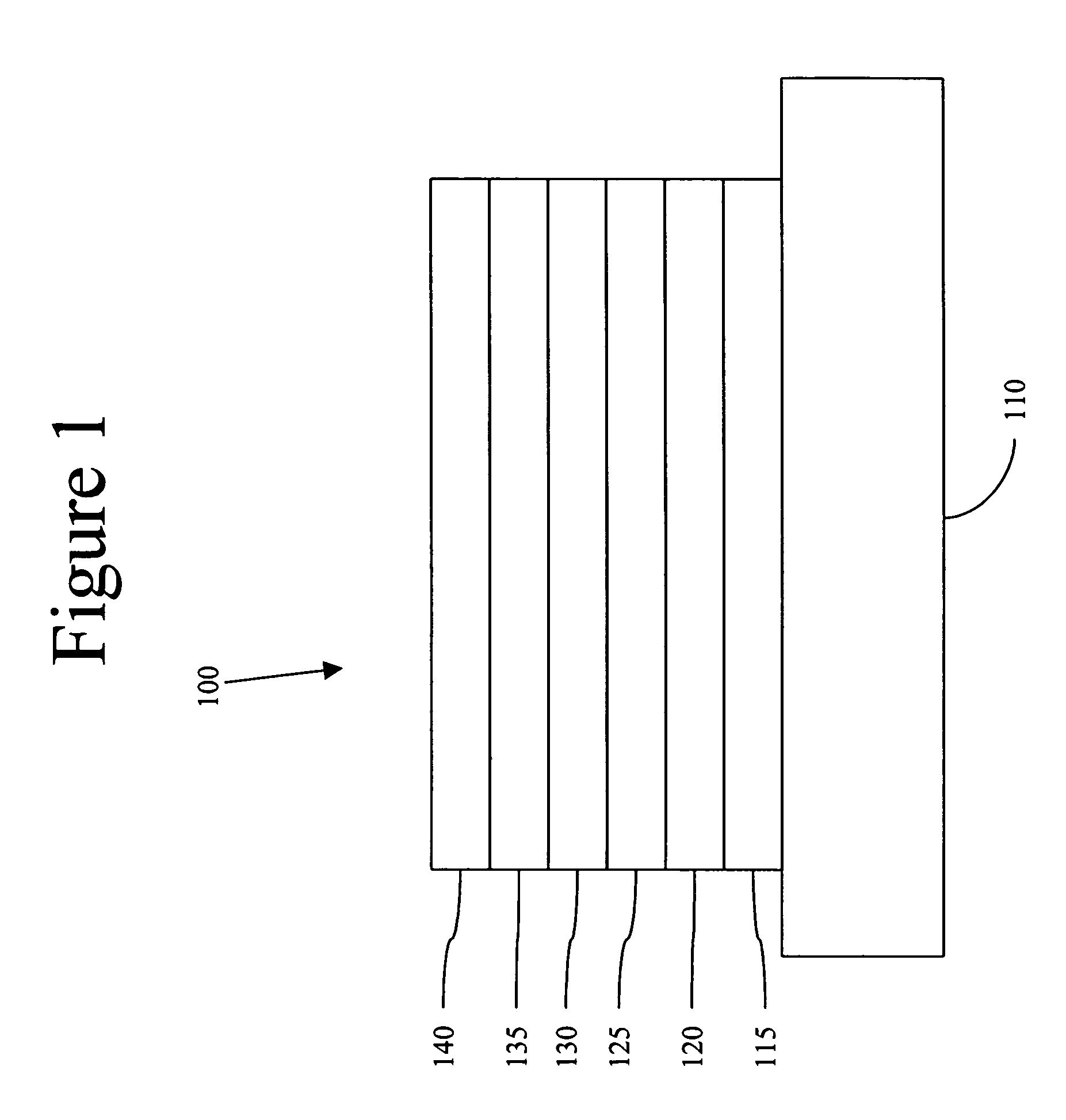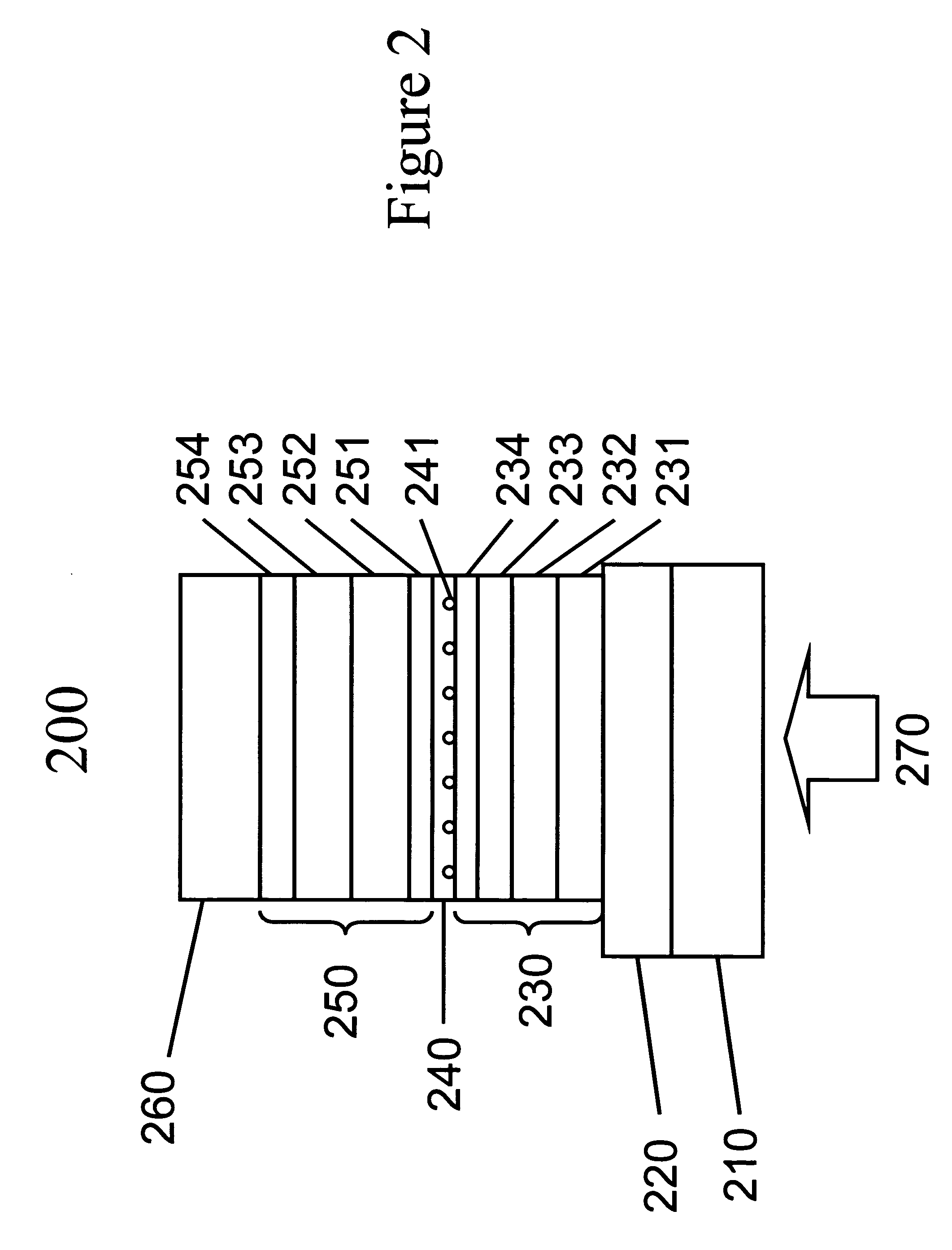Stacked organic photosensitive devices
a photosensitive device and organic technology, applied in the direction of semiconductor devices, electrical equipment, nanotechnology, etc., can solve the problems of difficult and expensive production of efficient crystalline-based devices, not providing a signal or current to control detection circuitry, not providing power to devices, equipment, circuitry,
- Summary
- Abstract
- Description
- Claims
- Application Information
AI Technical Summary
Benefits of technology
Problems solved by technology
Method used
Image
Examples
examples
[0104]In one embodiment of the invention, an efficient photovoltaic cell is provided. A cell with two stacked hybrid planar-mixed heterojunction cells was fabricated on a glass substrate pre-coated with transparent conducting ITO. The device has the structure: ITO / 75 Å CuPc / 122 Å CuPc:C60 (1.2:1 by weight) / 80 Å C60 / 50 Å PTCBI / 5 Å Ag / 50 Å m-MTDATA:F4-TCNQ / 60 Å CuPc / 132 Å CuPc:C60 (1.2:1 by weight) / 160 Å C60 / 75 Å BCP / Ag. The cell farther away from the cathode is slightly rich in CuPc, which absorbs in the spectral region from 550 nm to 750 nm, whereas the cell closer to the cathode is rich in C60, which absorbs in the spectral region from 350 nm to 550 nm. A maximum power efficiency was measured of (5.6±0.3)% under 1 to 4 suns simulated AM1.5G solar illumination.
[0105]The organic hybrid planar-mixed heterojunction photovoltaic cells were fabricated on glass substrates precoated with a ˜1500 Å thick transparent, conducting ITO anode with a sheet resistance of 15 Ω / sq. The substrates we...
PUM
 Login to View More
Login to View More Abstract
Description
Claims
Application Information
 Login to View More
Login to View More - R&D
- Intellectual Property
- Life Sciences
- Materials
- Tech Scout
- Unparalleled Data Quality
- Higher Quality Content
- 60% Fewer Hallucinations
Browse by: Latest US Patents, China's latest patents, Technical Efficacy Thesaurus, Application Domain, Technology Topic, Popular Technical Reports.
© 2025 PatSnap. All rights reserved.Legal|Privacy policy|Modern Slavery Act Transparency Statement|Sitemap|About US| Contact US: help@patsnap.com



